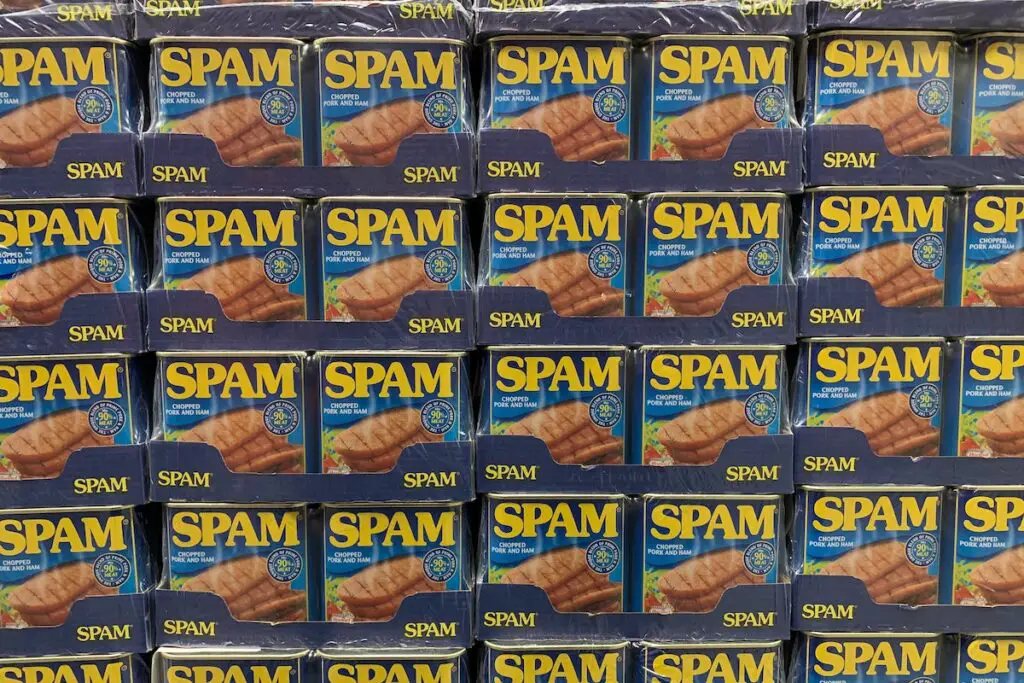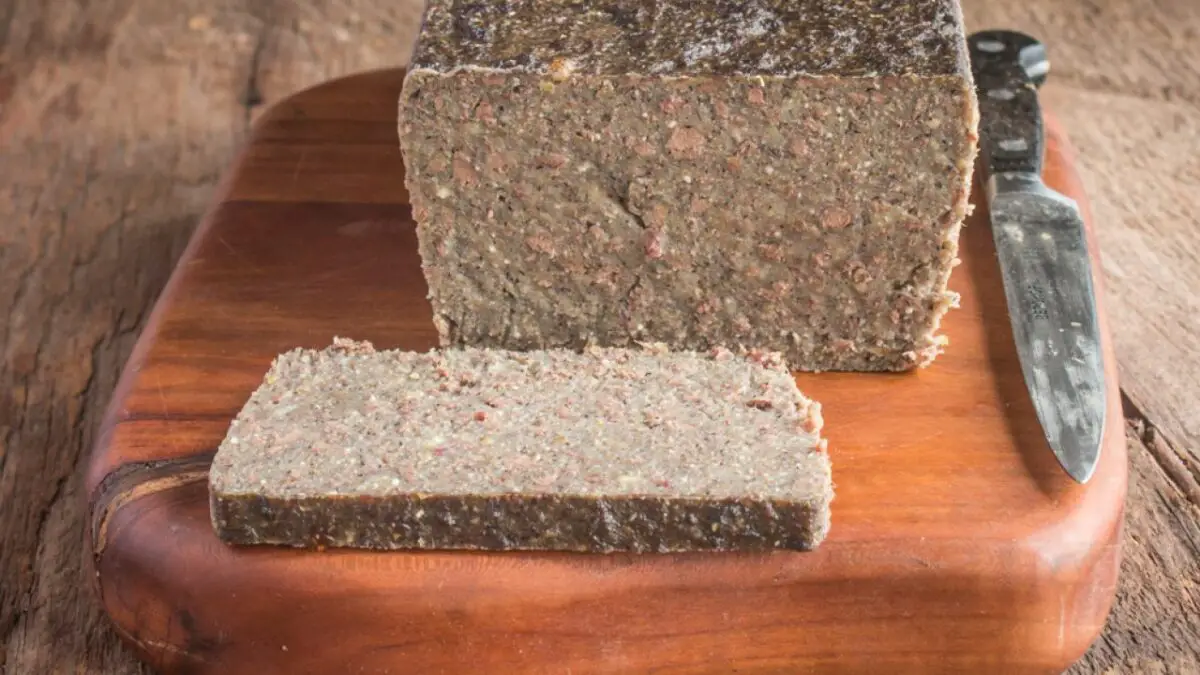Nominated-Day or Next-Day
Nominated-Day or Next-Day

The main difference between Spam and Scrapple are the ingredients and origin, but they are both processed meats. Spam, a Hawaiian favorite, is made from pork shoulder and ham. Scrapple from Pennsylvania consists of pork scraps and trimmings mixed with cornmeal and spices.
I appreciate the convenience and versatility of Spam, I find the flavor and texture of Scrapple to be more interesting and dynamic.
It may not be for everyone, but if you have never tried Scrapple, I encourage you to give it a chance.
While both Spam and Scrapple are canned meat products, they have distinct differences.
Spam is made from cuts of pork and ham, while scrapple is made from scraps and trimmings.
Scrapple contains more spices and herbs than spam and is usually fried, while you can eat spam raw out of the can.
Both should be consumed in moderation, but Scrapple may be slightly healthier.
As a chef, I prefer the flavor and texture of Scrapple, but the choice ultimately comes down to personal preference.
In this article, we will explore the differences between Spam and Scrapple and provide insight into which one might be the best choice for you.

Spam is a canned meat product that has been around since the 1930s.
It is made from pork, ham meat, salt, water, potato starch, sugar, and sodium nitrite.
Spam has become a popular food worldwide, especially in the United States, where it has become a staple.
One of the reasons for its popularity is its convenience.
Spam can last for a very long time when unopened, making it an ideal food for emergencies or camping trips.
It can be eaten cooked or straight out of the can and comes in various flavors.

Scrapple is a type of loaf made from pork scraps and trimmings.
The scraps are cooked with cornmeal, buckwheat flour, spices, and dried herbs until a thick porridge-like mixture is formed.
Then, the mixture is formed into a loaf and allowed to cool.
Scrapple is often eaten for breakfast and is particularly popular in the Pennsylvania Dutch region of the United States.
It has a unique texture is crispy on the outside and soft on the inside.
The main difference between Spam and Scrapple is their composition.
Spam is made from different cuts of pork and ham, while scrapple is made from pork scraps and trimmings.
Scrapple also contains more spices and herbs than Spam, giving it a different flavor profile.
Another difference is in how they are prepared.
Spam can be eaten uncooked or cooked in various ways, whereas scrapple is usually fried.
Scrapple is also less widely available than spam, as it is a regional specialty.
In terms of nutritional value, both spam and scrapple should be consumed in moderation.
| Spam (per 100g) | Scrapple (per 100g) | |
|---|---|---|
| Calories | 315 | 216 |
| Protein | 13g | 9.7g |
| Fat | 27g | 15.2g |
| Sodium | 1,180mg | 681mg |
They both contain preservatives and additives that may not be suitable for everyone.
However, Scrapple contains slightly fewer calories than Spam, around 140 calories per serving compared to spam’s 170.
Scrapple also tends to be higher in protein and lower in fat than spam.
Scrapple is safe to eat when prepared properly. Like any meat product, handling and cooking scrapple safely is important to avoid the risk of foodborne illness.
Spam can be cooked in a variety of ways, including frying, baking, grilling, or even microwaving. The best way to cook spam depends on your personal preference and the dish you are preparing.
Both Spam and Scrapple can be frozen for long-term storage. Make sure to wrap them tightly to prevent freezer burn, and thaw them in the refrigerator before using them.
Comments
Leave a comment